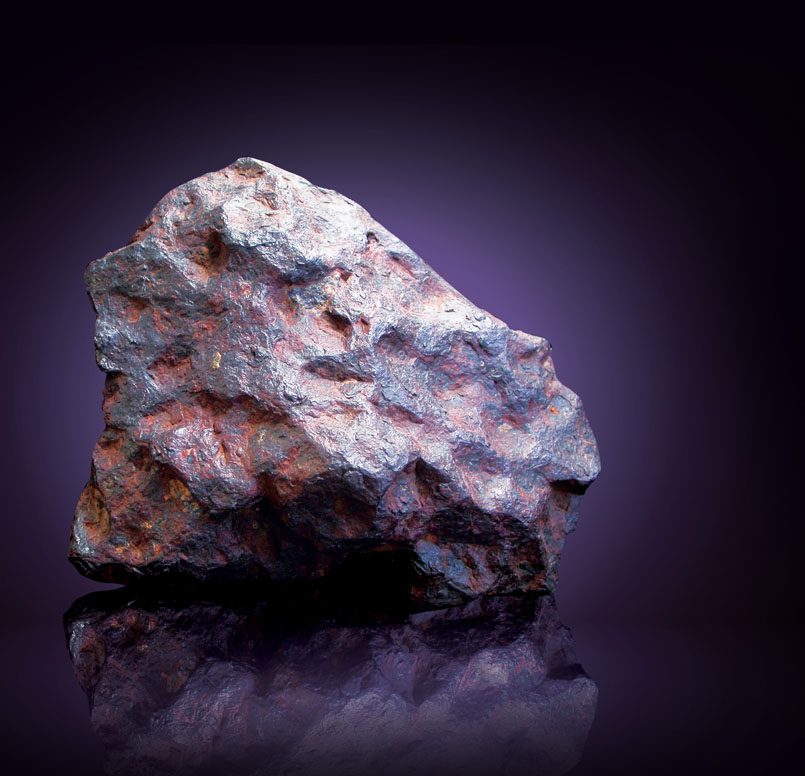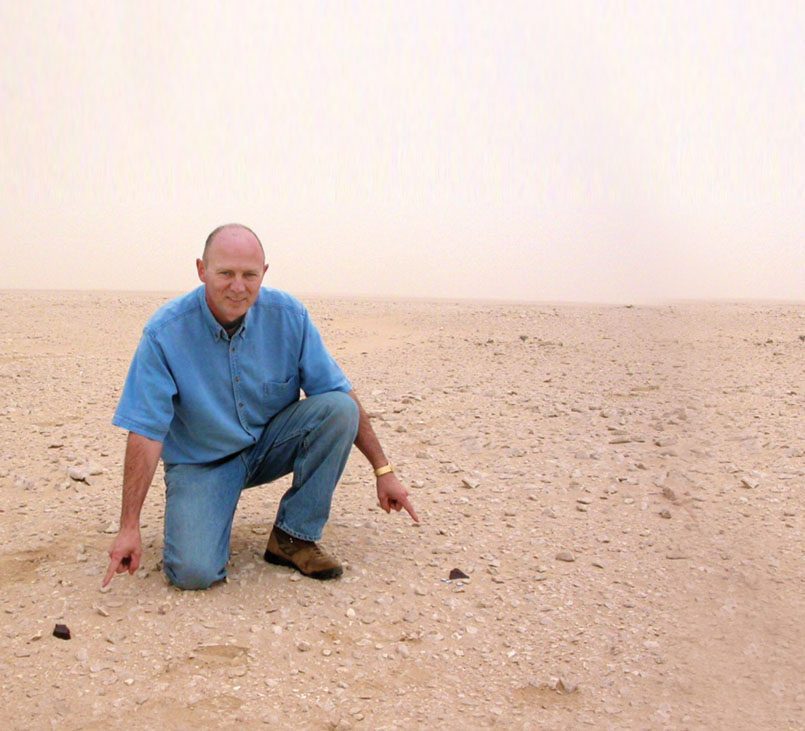30 Jun 2022 A collection that’s truly out of this world
By Dwain Hebda
In his long career as a pharmacist, Robert Woolard’s life has been all about precision, dispensing medications by exact and painstaking formulas. And in his spare time, he’s no less stringent with hobbies that lend themselves to numbers.
His first affectation was arrowheads, of which he found and collected 10,000. His next passion carried him 105,000 air miles and 22,000 land miles to five states and four foreign countries — all in pursuit of the 2,000 meteorites he’s gathered, catalogued and collected, a captivation that’s held him for 30 years.

“I cannot remember when I very first started being interested in space, but it was as a child,” he said. “I can say that by age 8 or 9, I was interested in looking up at the sky.
“When I was about 12 years old or so, my parents bought me a little rinky-dink telescope from the pawn shop, and I took it outside and started looking at things. When I saw the rings of Saturn, I still remember the awe and sense of wonder I got, even from that long ago. Nearly 70 years later, I remember the thrill of seeing that.”
That said, Woolard may not have found his way in the orbit of meteorite collecting had it not been for a chance broadcast overheard by a friend of his back in the 1980s. One of David Letterman’s guests that fateful evening was Arizona meteorite aficionado and entrepreneur Robert Haag and when his friend told him about it, Woolard was intrigued.
“I instantly picked up the phone and called that guy,” he remembered. “I ordered 10 small meteorites from him, and I remember the day I saw the postman pull up. I tore out there, got the box and tore into it. I was in hog heaven, actually.”
Through Haag’s customer catalog, Woolard learned of meteorite hunting trips and a new hobby was born.
“I worked with a fellow pharmacist friend, and I said, ‘Man, wouldn’t this be awesome to go on a meteorite hunting adventure and actually find rocks from outer space?’” Woolard said. “He said, ‘Yeah, that’d be pretty cool.’ I said, ‘Hey, would you go with me?’ So that’s how it all began.”
During his three-decade odyssey, Woolard has become an authority on fallen celestial matter. His finds have ranged in size from smaller than a marble up to 75- and 125-pound monsters, and most everything in between. He also relishes the chance to share his knowledge of space rocks with others, starting with their various species.
“When an object is in outer space and it’s fairly large, the size of a trash can or bigger, it could probably be called an asteroid. They can be up to 500 miles wide,” he said. “If it’s smaller than that, it’s usually referred to as a meteoroid. If it happens to get to Earth’s atmosphere and comes falling through the sky and you see this bright light up there, that is a meteor. Anything that makes it to the ground that you can pick up in your hand is a meteorite.”

Meteorites, in turn, fall into three basic classifications, depending on their composition. Stony meteorites broke off from the crust of an asteroid; iron meteorites comprised the asteroid’s core. And from the thin band where the rocky crust meets the metallic innards, we get stony iron meteorites. Despite hunting for three decades, Woolard has never found a stony iron specimen. Nor, he’s quick to point out, has he ever found a meteorite in Arkansas, despite having lived here his whole life. And he’s not alone; regardless of what the movies tell you, meteorites aren’t that much different in appearance to Earth rocks. Which means unless you’re standing right under them when they land during a meteor shower, they’re easily dismissed by the naked eye as field stones or common gravel.
That’s too random for a guy like Woolard, so he takes steps to improve his odds of success, from searching terrain without a lot of vegetation (unlike Arkansas’s) to tracking meteor showers.
One prize of his collection — most of which he’s donated to University of Arkansas – Little Rock, by the way — is a chunk of the moon, which was found in a desert in Oman by a meteorite hunter in his party who shared a piece of it with him. Upon returning home, Woolard was moved to do the same.
“None of the Apollo astronauts were allowed to keep any of the Apollo moon material they brought back, because it was all taxpayer-funded,” he said. “They weren’t allowed to keep even a tiny BB-sized piece, nothing.
“So, I sliced up the lunar meteorite and I sent a piece to Neil Armstrong as well as one to Alan Bean, the fourth man on the moon. It just seemed an injustice that the first men on the moon didn’t even have a piece of it.”
- The pinnacle of success - June 1, 2025
- Five-Oh-Ones to Watch 2025: Aaron Farris - December 31, 2024
- Julia Gaffney brings medals and mettle home to Mayflower - October 30, 2024










